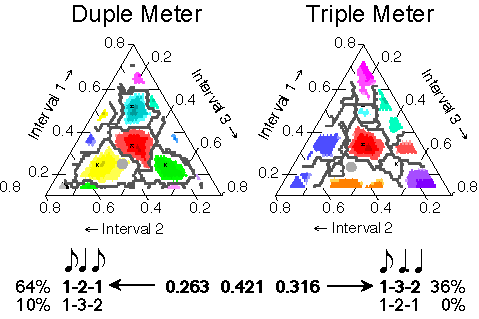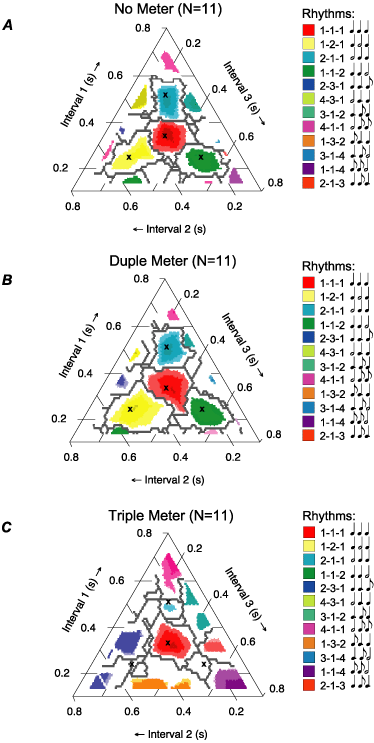|
Appendix to: Desain, P. & Honing H. (submitted) Modeling the Effect of Meter in the Identification of Rhythmic Categories: Preliminary Results.
|
||
|
Animated time clumping map showing the change from no meter to duple meter condition (left) and from no meter to triple meter condition (right).

Example of the rhythm [0.263 0.421 0.316] (in seconds) presented in a duple meter context (left, gray circle) and in a triple meter context (right, gray circle). In the duple meter context most subjects (64%) perceived the rhythm as 1-2-1 (10% identified it as 1-3-2). In the triple context the very same rhythm is perceived by most subjects as 1-3-2 (no one identified it as 1-2-1). The audio examples are like the stimulus presented to the subjects: three times repeated embedded in either a duple or triple metrical context.
